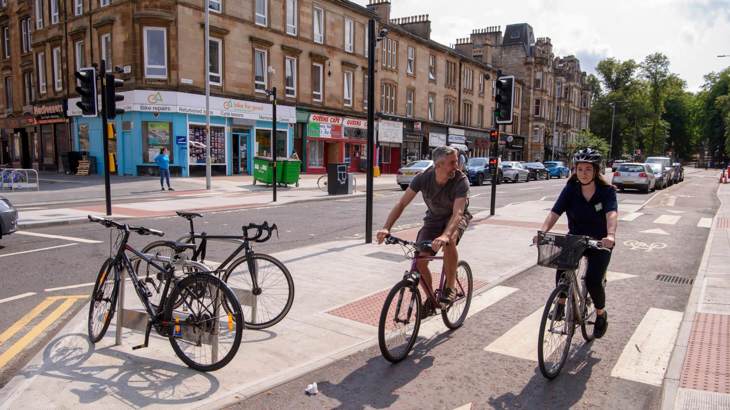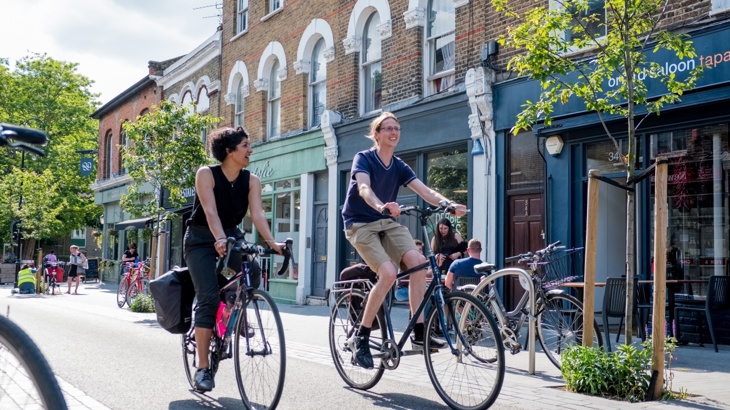To create a healthier, successful and equitable city, the Mayor of London has identified the need to reduce motor traffic, with each borough being required to write a traffic-reduction strategy. There are more and more examples of authorities taking brave decisions to realise these benefits. However, it is tricky to get it right.

There is strong, substantial evidence that active travel interventions are effective at increasing walking, cycling and physical activity
In theory, restricting traffic is easy to do – you can just close the road by obstructing it. But in reality, it is rarely this simple and one cannot simply do so without the agreement of local stakeholders. So how can highway authorities develop effective traffic-reduction strategies?
Developing effective traffic-reduction strategies
Firstly, it is essential to start by understanding the traffic challenge. This means identifying trip generators (destinations) and establishing where traffic is coming from.
It is very common for the traffic causing a problem to have very little to do with the location in question; it is often just passing through on its way to somewhere else. In this case, we need to understand whether alternative routes are possible and whether traffic can be encouraged to stick to one less-intrusive route, for example, a strategic main road.
There may also be issues with satnav systems directing traffic through a series of smaller roads, flooding a wide area with transient traffic, and exacerbating congestion by increasing the volume of movements onto and off a primary route. And, what are the alternative means to access those places? We need to understand the barriers to people making more positive choices about how they travel.
There may be concerns that traffic management measures might displace problems from one location to another.
Careful management can lead to traffic evaporation - the phenomenon that results in an overall decrease in levels of traffic.
Across Waltham Forest’s Mini-Holland scheme, there has been an overall 56% decrease in traffic levels, with independent research attributing further benefits such as increased life expectancy to this programme.
Fundamentally, if people see that there is a better option available to them than using their car, then many will make a more positive transport choice.
Issues about economic performance and equitable access are very often linked to ‘fear of change’ preconceptions. Retailers often misunderstand how their customers reach their shops and worry that traffic restriction will reduce footfall and turnover.
People with limited mobility sometimes fear that changes won’t offer them a better solution that is currently available to them. There is, however, a growing body of evidence to suggest that less traffic means more customers and more choices for access.
Of course, every neighbourhood is different, and challenges will vary. But removing through-traffic can be transformative in so many different ways.
The closure of Bank, a busy junction in the City of London, to general traffic throughout the working day has led to a drop in collisions of 52%. It’s created an environment that is far safer and more pleasant for people to walk and cycle through – a far cry from the intimidating environment it was previously. This scheme was by no means uncontentious, but the positive impact of it has meant that the City of London has moved to make the trial permanent, and in doing so sets the benchmark for the rest of London.
If designers and policymakers are serious about getting more people to walk, cycle and take public transport then it is key to take ambitious, affirmative action such as this to reduce the volume of traffic and help to reclaim the streets.

Seven steps for effective traffic demand management
We have decades of experience in helping partners to change places for the benefit of the people who live there, earn their living there, and need to access services there. Our seven-step blueprint for effective traffic demand management is:
- Work at a neighbourhood scale.
- Work with communities to understand their perception of the nature and extent of the problem.
- Hear from people most affected about what solutions might work, then design accordingly.
- Identify the likely effects of changes on the area, with the option to trial measures.
- Communicate the challenge, the proposed solutions, why these are likely to work and what change will look like to the community.
- Support the stakeholders in the community through the process of change.
- Undertake careful monitoring of traffic levels before, during and after the process.
Success story: Estreham Road in south London
We helped the London Borough of Lambeth to engage the community around Estreham Road to trial a scheme that significantly reduced through-traffic on a residential street, where dangerous levels of congestion were putting children and other road users at risk.
Having worked closely with the community to hear their views, we designed proposals and progressed a trial of their preferred design, a northbound no-entry point at the southern end of Estreham Road. This temporary trial was a game changer. It gave people the chance to see how changes would work in practice, the impact on the neighbourhood and on local traffic.
Support rose as a result of the community engagement work and trial, and air quality improved as nitrogen dioxide levels fell.
The trial was made permanent, and Estreham Road is now a healthier street environment for people. The proof is really in the pudding: active travel has risen and car usage for local journeys has fallen by an incredible 40%.

